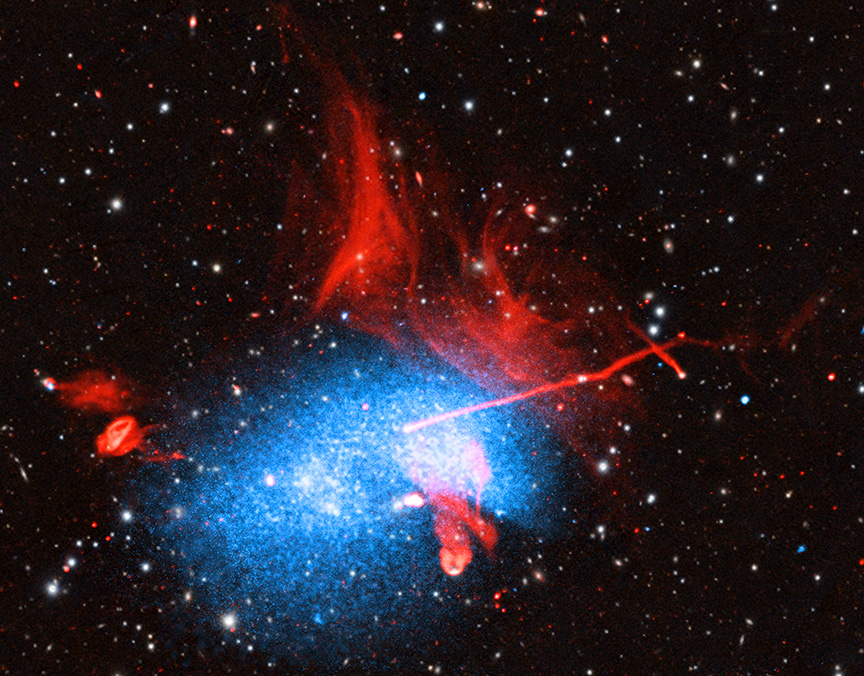Galactic Collision: Spectacular three-way smashup caught by telescopes

Astronomers, using NASA's Chandra X-ray Observatory, ESA's XMM-Newton and three other radio telescopes, have observed an incredible collision between three galaxy clusters.
The galaxy cluster forming from the collision is Abell 2256, located 780 million light-years away from Earth. The researchers are trying to figure out what has led to this unusual-looking structure.
The above composite image of Abell 2256 combines X-ray data from Chandra and XMM in blue with radio data collected by the Giant Metrewave Radio Telescope (GMRT), the Low Frequency Array (LOFAR), and the Karl G. Jansky Very Large Array (VLA) all in red, along with optical and infrared data from Pan-STARRs in white and pale yellow.
Galaxy clusters, collections of galaxies that are bound together by gravity, can contain hundreds to thousands of galaxies and are among the largest structures in the universe. They play an important role in astrophysics, as they can be used to study the large-scale structure of the universe, the distribution of dark matter, and the evolution of galaxies.
Additionally, these clusters contain enormous reservoirs of superheated gas, which can only be observed by X-ray telescopes like Chandra and XMM.
The radio emission in this system comes from multiple sources. The first source is the galaxies, where radio signals are produced by particles that are expelled in jets from supermassive black holes at their centers. These jets are either shooting into space in straight and narrow lines or slowed down as the jets interact with gas they are running into, creating complex shapes and filaments.
Radio waves are also being emitted from massive filaments, mostly in the north of the radio-emitting galaxies. This is probably due to the collision creating shock waves and accelerating particles in the gas over 2 million light-years.
There is a halo of radio emission located near the center of the collision.
When galaxies collide💥@ChandraXRay helps reveal a massive knot-like collision of galaxy clusters ~780 million light-years from Earth. With black holes and other phenomena at work, galaxy clusters are the largest particle accelerators in the universe! https://t.co/2FMxpG2Ncq pic.twitter.com/lkNjWAL7Jz
— NASA Exoplanets (@NASAExoplanets) January 30, 2023










